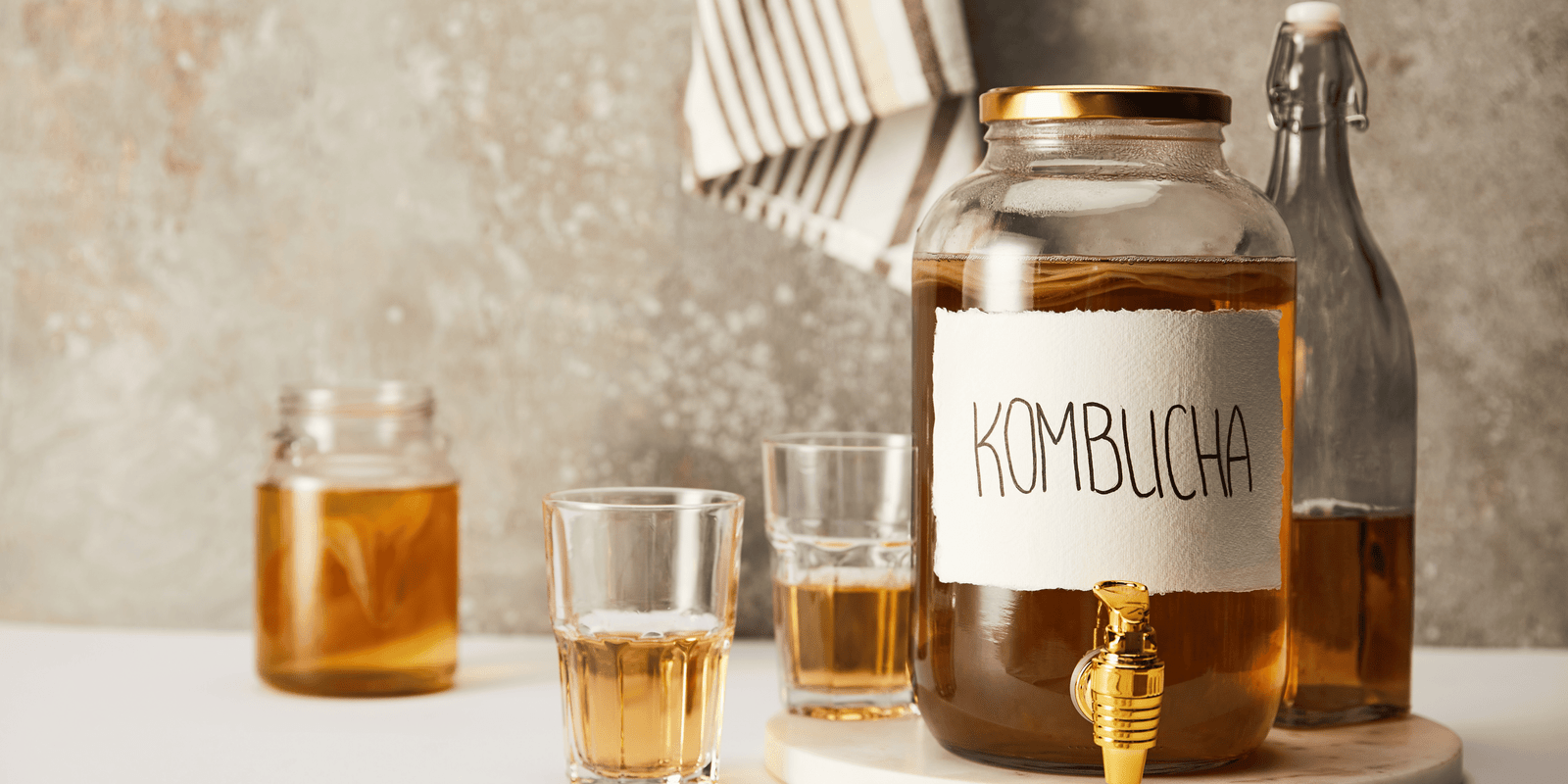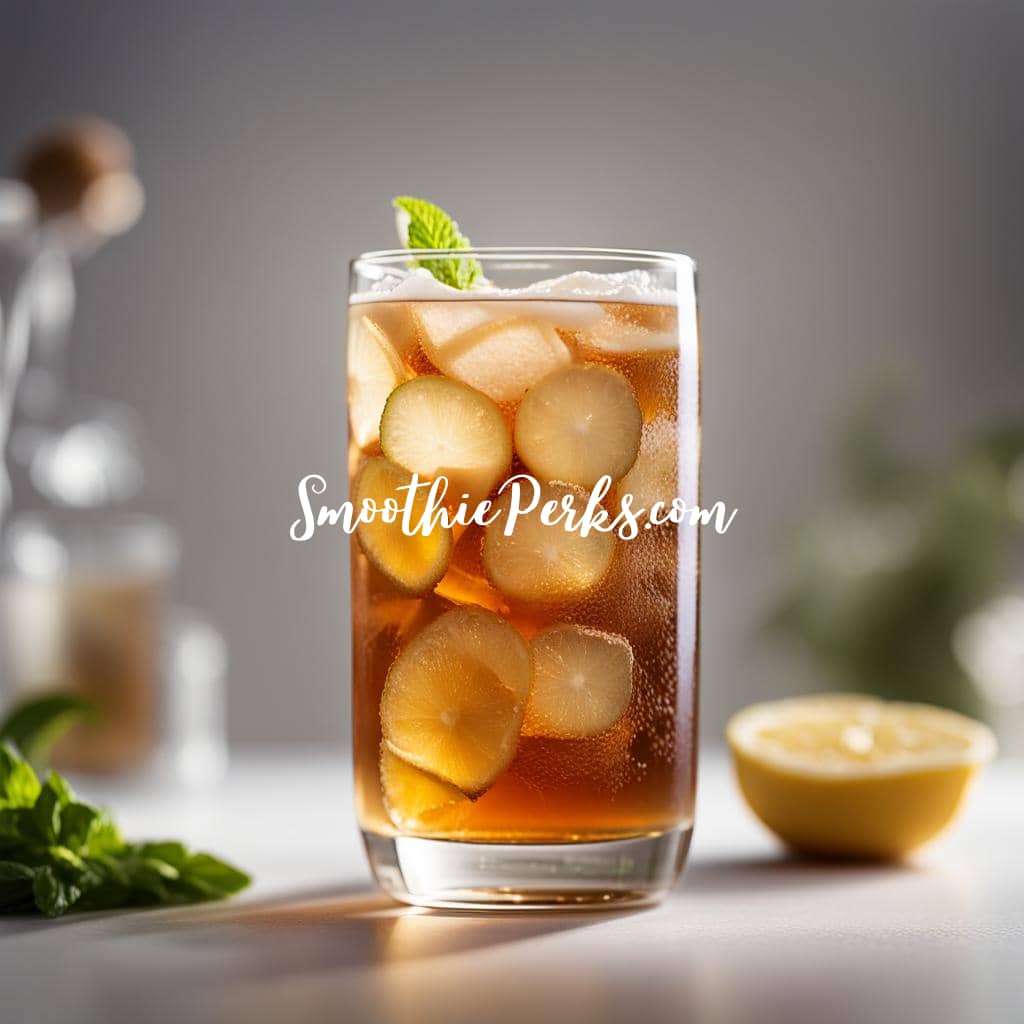Welcome to the world of a Basic Kombucha Recipe! If you’re looking to delve into the art of crafting this effervescent and probiotic-rich beverage, you’ve come to the right place.
In this article, we will guide you through the wonderful realm of a basic kombucha recipe, from the basics to the more adventurous variations. So grab your brewing equipment, prepare your taste buds, and let’s get started!
What is Kombucha?
Kombucha is a fermented tea beverage that has been enjoyed for centuries. It is made by combining sweetened tea with a symbiotic culture of bacteria and yeast (SCOBY). The SCOBY consumes the sugar in the tea, producing a tangy and slightly fizzy drink that is bursting with beneficial acids, enzymes, and probiotics.
The Origins of Kombucha
The origins of kombucha can be traced back to ancient China, where it was revered for its health-giving properties. Over time, it spread to other parts of the world, including Eastern Europe and beyond, before gaining popularity worldwide. Today, kombucha is celebrated for its unique taste and potential health benefits.
Health Benefits of Kombucha
Kombucha is often praised for its potential health benefits. While scientific research is ongoing, kombucha is believed to support gut health, aid digestion, and boost the immune system. It is also rich in antioxidants and may have detoxifying properties. However, it’s essential to note that individual experiences may vary, and it’s always best to consult with a healthcare professional.
Getting Started with Kombucha
Brewing Basics: Before diving into kombucha recipes, it’s crucial to understand the brewing process. Brewing kombucha involves several key steps, including brewing the tea, adding the SCOBY and starter liquid, allowing fermentation, and finally, bottling and carbonating the brew.
Each step contributes to the unique flavor and qualities of the finished kombucha.
Necessary Equipment
To brew kombucha, you’ll need a few essential pieces of equipment. These include a large glass jar or vessel, a breathable cover (such as a cloth or coffee filter), rubber bands to secure the cover, a brewing thermometer, and glass bottles for storing the finished kombucha.
Choosing the Right Tea
The type of tea you use plays a significant role in the flavor profile of your kombucha. Black tea, green tea, and white tea are popular choices, each lending its own distinct characteristics to the brew. Experimenting with different teas can lead to exciting flavor combinations.
Selecting a Starter Culture
The heart of kombucha brewing lies in the SCOBY, a gelatinous disc composed of bacteria and yeast. You can obtain a SCOBY from a friend or purchase one from a reputable source. Alternatively, you can grow your SCOBY from store-bought kombucha, although this method requires more patience.
Understanding the Fermentation Process
During fermentation, the SCOBY consumes the sugar in the sweetened tea, converting it into beneficial acids and carbon dioxide. The length of fermentation affects the taste and carbonation levels of the kombucha. It’s essential to monitor the process to achieve the desired flavor and effervescence.
Ingredients
To brew a basic kombucha recipe, you will need:
- Water
- Tea (black, green, or white)
- Sugar
- SCOBY
- Starter liquid (previously brewed kombucha)
Step-by-Step Brewing Process
- Boil water and steep the tea.
- Dissolve sugar in the tea, creating a sweetened tea mixture.
- Allow the tea to cool to room temperature.
- Transfer the tea to a clean glass jar.
- Add the SCOBY and starter liquid to the jar.
- Cover the jar with a breathable cloth and secure it with a rubber band.
- Place the jar in a warm and undisturbed area.
- Allow the kombucha to ferment for 7 to 14 days, tasting periodically to gauge the desired flavor.
- Once fermentation is complete, remove the SCOBY and set it aside with some starter liquid for your next brew.
- Transfer the finished kombucha to glass bottles, leaving some headspace.
- Optionally, you can add fruit or herbs to the bottles for secondary fermentation.
- Seal the bottles tightly and allow them to carbonate for a few days.
- Refrigerate the bottles to halt fermentation and chill the kombucha.
- Enjoy your homemade kombucha!
Monitoring Fermentation
During fermentation, it’s important to keep an eye on the kombucha. A healthy brew should develop a tangy and slightly acidic taste. Taste-testing throughout the process will help you determine the ideal fermentation time for your personal preferences. Remember, the longer you ferment, the more tart the kombucha becomes.
Bottling and Carbonation
After primary fermentation, you can enhance the flavor and carbonation of your kombucha through secondary fermentation. This involves adding fruits, herbs, or spices to the bottled kombucha, allowing for additional fermentation and flavor infusion. Remember to burp the bottles periodically to release excess pressure.
Flavorful Variations of a basic kombucha recipe
While classic kombucha is delightful on its own, experimenting with different flavors can be an exciting and rewarding experience. Here are a few variations to spark your creativity:
Fruit Infusions
Adding fresh or frozen fruits to your kombucha can introduce a burst of natural sweetness and unique flavors. Popular fruit choices include berries, citrus fruits, mangoes, and peaches. Experiment with different fruit combinations to discover your favorite blend.
Herbal Blends
Herbs and botanicals can lend aromatic and soothing notes to your kombucha. Consider infusing your brew with lavender, mint, hibiscus, or chamomile. The possibilities are endless, so feel free to get creative with your herbal combinations.
Spiced Kombucha
Spices can elevate the complexity of your kombucha, adding warmth and depth. Cinnamon, ginger, cardamom, and cloves are popular options for spiced kombucha. Just a touch of these aromatic spices can create a delightful sensory experience.
Creative Combinations
Don’t be afraid to think outside the box and experiment with unique flavor combinations. For example, try blending watermelon and basil for a refreshing twist or combining pineapple and jalapeño for a tangy and spicy kick. Let your taste buds be your guide!
Troubleshooting and Tips
Brewing kombucha can occasionally pose challenges, but fear not! Here are some common issues and their solutions to help you troubleshoot:
Common Issues and Solutions
- Mold: If you notice mold on your SCOBY or the surface of the kombucha, discard the batch immediately. Mold is a sign of contamination, and it’s essential to start fresh with a clean setup.
- Weak or Vinegary Flavor: If your kombucha tastes weak or overly vinegary, it may have fermented for too long. Shorten the fermentation time in subsequent batches to achieve a milder taste.
- Lack of Carbonation: If your kombucha lacks carbonation, try adding a little more sugar or extending the secondary fermentation period. Remember to burp the bottles regularly to prevent excessive pressure buildup.
Preventing Mold and Contamination
Maintaining a clean brewing environment is crucial to prevent mold and contamination. Wash your hands and equipment thoroughly before handling the SCOBY and avoid cross-contamination from other fermented foods or substances. Regularly inspect your SCOBY for signs of mold or unusual growth.
Achieving Desired Carbonation Levels
Carbonation adds a delightful effervescence to kombucha. To control carbonation levels, adjust the amount of sugar added during brewing and extend the secondary fermentation time. Experiment with different techniques to find the perfect balance for your preferences.
Serving and Enjoying Kombucha
When it comes to serving kombucha, the presentation can enhance the overall experience. Opt for glassware that showcases the beautiful color and effervescence of the brew. Tall, narrow glasses or wide-mouthed mason jars are popular choices. Garnishing with fresh herbs or fruit slices adds an elegant touch.
Pairing a Basic Kombucha Recipe with Food
Kombucha’s complex flavors and natural acidity make it a versatile beverage for pairing with food. It pairs well with light and fresh dishes such as salads, sushi, or grilled vegetables. The tangy notes of kombucha can also complement rich and savory foods like roasted meats or aged cheeses.
Exploring Different Temperature Preferences
Kombucha can be enjoyed at various temperatures, each offering a unique taste experience. Chilled kombucha is crisp and refreshing, perfect for hot summer days. Room-temperature kombucha allows the flavors to unfold fully, while warm kombucha can provide a comforting and soothing sensation.
Kombucha Safety and Storage: Proper Storage Techniques
To maintain the quality and flavor of your kombucha, proper storage is essential. Store your bottled kombucha in a cool and dark place, away from direct sunlight. Sunlight can affect the taste and quality of the brew. It’s also important to keep the bottles upright to prevent carbonation loss.
Shelf Life and Refrigeration
Kombucha is a living beverage and continues to ferment even after bottling. In the refrigerator, fermentation slows down significantly, extending the shelf life of your kombucha. Generally, refrigerated kombucha can stay fresh for several weeks, but its taste may evolve over time. Trust your senses when determining if it’s still enjoyable to drink.
Ensuring Safe Consumption
While kombucha is generally safe for most individuals, it’s essential to practice proper hygiene and sanitation during the brewing process to minimize the risk of contamination. If you have a compromised immune system or are pregnant, it’s advisable to consult with a healthcare professional before consuming kombucha.
Frequently Asked Questions
What are the potential side effects of drinking kombucha?
Kombucha is generally safe to consume, but some individuals may experience digestive discomfort, bloating, or allergic reactions. It’s best to start with small quantities and listen to your body. If you have any concerns, consult with a healthcare professional.
Can I make kombucha without a starter culture?
While a starter culture (SCOBY and starter liquid) is traditionally used to make kombucha, you can experiment with alternative methods. Some people have successfully brewed kombucha using store-bought kombucha as a starter. However, the results may vary, and it’s advisable to obtain a reliable SCOBY for consistent results.
How long does it take to brew kombucha?
The brewing time for kombucha can vary depending on factors such as temperature, desired flavor, and fermentation conditions. Generally, the primary fermentation takes around 7 to 14 days, while the secondary fermentation lasts a few additional days. Remember to taste-test along the way to achieve your preferred flavor profile.
Can I use flavored tea to make a basic kombucha recipe?
Absolutely! Using flavored teas, such as herbal blends or flavored black teas, can add a delightful twist to your kombucha. Experiment with different flavors to find your favorite combinations.
What are some creative ways to use leftover kombucha?
Leftover kombucha can be utilized in various creative ways. You can use it as a base for salad dressings, and marinades, or even as a replacement for vinegar in recipes. It can also be used as a starter liquid for your next batch of kombucha or to kickstart other fermentation projects like sourdough bread or homemade vinegar.
In conclusion, a basic kombucha recipe offers a world of exploration and taste sensations. Whether you prefer classic brews or adventurous flavor combinations, there’s a kombucha recipe waiting to tantalize your taste buds.
So, roll up your sleeves, embrace your inner alchemist, and embark on a journey of brewing delicious and healthful kombucha at home. Cheers to your kombucha-making endeavors!
ⓘ Disclaimer:
Please note that the information provided in this blog post is for general informational purposes only and does not constitute professional advice. The author of this article is not an expert. It is important to consult with a qualified professional. The content of this blog post is based on the author’s personal experiences, research, and opinions. SmoothiePerks.com nor the author assumes no responsibility or liability for any consequences resulting from the use of this information. By reading this blog post, you acknowledge and accept that the information provided here is not a substitute for professional advice.
ⓘ Disclosure
Amazon Associates Program: smoothieperks.com is a participant in the Amazon Services LLC Associates Program, an affiliate advertising program designed to provide a means for sites to earn fees by advertising and linking to Amazon.com.
ⓘ Affiliate Disclaimer/Disclosure:
Please assume any links to 3rd party products are affiliate links for which I may receive a small payment from the vendor if you decide to sign up or purchase – at no cost to you.





One thought on “Basic Kombucha Recipe: Brew Your Own Probiotic Tonic”